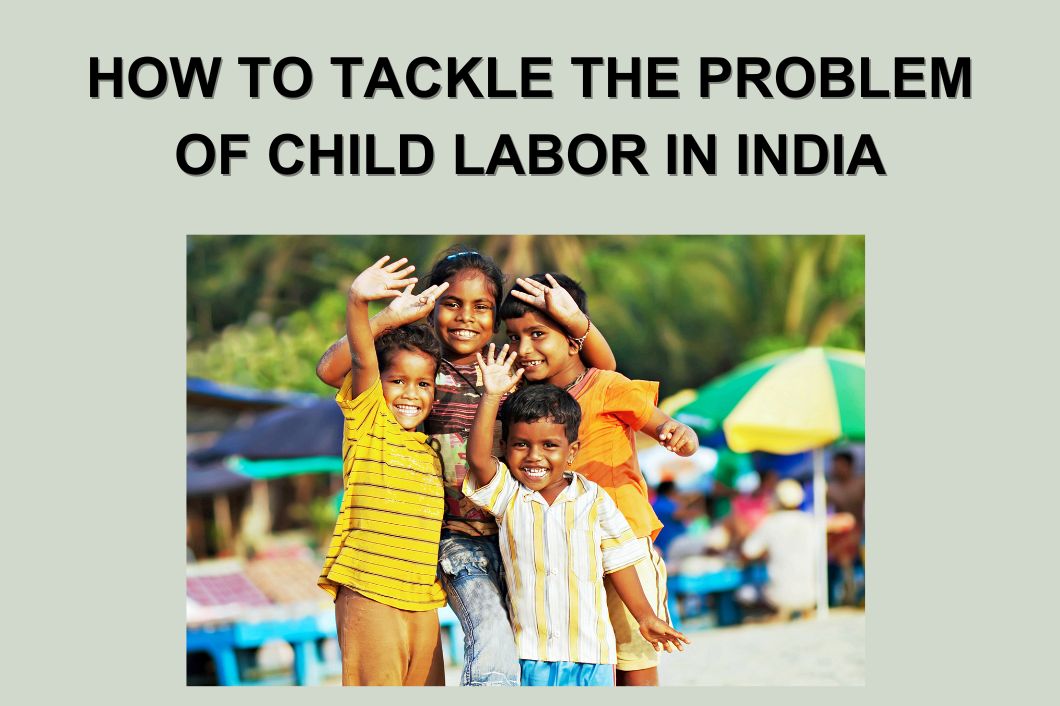How To Tackle The Problem of Child Labor in India

Understanding Child Labor in India
The practice of child labor persists in India, with over 8 million youngsters, aged 5-14, engaged in toil across fields, factories, shops, and various other domains. Fortunately, a combination of successive governmental strategies and rigorous civil society endeavors, spearheaded by entities of NGOs, have showcased a determined drive in championing the rights of children. This is further complemented by a growing number of socially-conscious corporations and altruistic citizens who contribute to charitable causes, making child rights a collective concern.
How to Combat Child Labor in India
Disseminating Awareness
Raising consciousness among parents and communities can be pivotal in averting disruptions in children’s education, thereby preventing them from being coerced into child labor. A lack of parental awareness creates an environment where child traffickers can exploit vulnerable children, leading to their involvement in child labor. Informed communities are better equipped to comprehend and address children’s issues effectively. Increased awareness also ensures that communities can harness opportunities for growth, education, employment, and entrepreneurship, ultimately fostering a socially and economically advanced society with reduced hardships for children.
Non-governmental organizations employ community events, sports, arts, and theater to educate the populace about the significance of child rights in India. Moreover, they facilitate the creation of income sources, educational tools, and information access for communities, all with the goal of propelling children and their communities towards progress.
Stricter Legislation and Effective Enforcement
Effective policymaking is essential for instigating lasting social transformation. Advocating for improved laws entails showcasing the significant benefits that change can bring. Non-governmental organizations conduct research and present findings regarding the exploitation of children, utilizing case studies to illustrate how their efforts positively impact children. Achieving change at the policy level necessitates building relationships with various stakeholders, including the media, legislators, citizens, fellow members of civil society, and more.
Several cases have been filed under recent legislations such as the Protection of Children Against Sexual Offences Act (2012) and the Immoral Traffic (Prevention) Act, resulting in increased convictions, a testament to how legal frameworks can curtail child trafficking. Non-governmental organizations also maintain close collaboration with authorities at the district and state levels to ensure vigilant oversight of the implementation of pro-child laws.
Increasing School Enrollment
India boasts the world’s largest educational system, yet faces challenges related to low literacy rates, stemming from low enrollment and inadequate educational infrastructure. The organization identifies out-of-school children and those at risk of dropping out, ensuring their inclusion in the educational system.
Deterrents to Employing Children in Domestic, Commercial, and Industrial Sectors
Child labor is perpetuated when Indian businesses openly engage in it, particularly in industries such as retail, hospitality, and menial labor. Presently, non-governmental organizations are sensitizing trade associations to eradicate this societal menace. They are also educating the local populace about the importance of reporting instances of child labor in both businesses and households.
Supporting Non-Governmental Organizations
NGOs not only provides immediate assistance to children ensnared in child labor but also strives for long-term societal transformation through policy advocacy. The organizations ensures that existing policies are translated into action. Collaborating with state and national-level authorities, including state police departments, is integral to preventing child exploitation incidents.
In Conclusion
Civil society initiatives have afforded hundreds of thousands of children the opportunity to lead dignified lives where they can savor their formative years fully.


